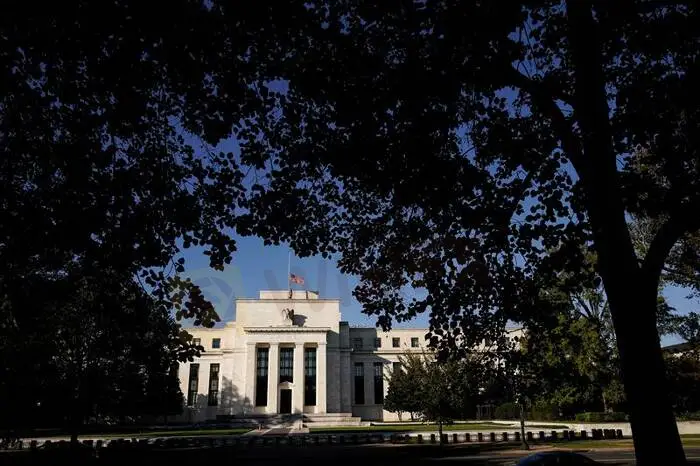简体中文
繁體中文
English
Pусский
日本語
ภาษาไทย
Tiếng Việt
Bahasa Indonesia
Español
हिन्दी
Filippiiniläinen
Français
Deutsch
Português
Türkçe
한국어
العربية
Fed kicks off debate on issuing its own digital currency with new white paper
Abstract:Creating an official digital version of the U.S. dollar could speed up payments and provide households with a safe option as payments technology evolves

Creating an official digital version of the U.S. dollar could speed up payments and provide households with a safe option as payments technology evolves, but it would also present financial stability risks and privacy concerns, the Federal Reserve said in a long-awaited discussion paper released on Thursday.
The paper made no policy recommendations and offered no clear signal on where the Fed stands on whether to launch a central bank digital currency (CBDC), a digital form of cash in your pocket. The Fed said it would not proceed with creating one “without clear support from the executive branch and from Congress, ideally in the form of a specific authorizing law.”
The paper tiptoes around a subject that has sparked debate inside the Feds https://www.reuters.com/article/usa-fed-digital-currency-analysis-idTRNIKBN2GQ13C top ranks, even as other central banks across the globe are exploring the adoption of digital currencies.
Nevertheless, it sets the stage for the central bank to collect public feedback on the potential costs and benefits of a CBDC, which could ultimately advance legislation long-term.
“While a CBDC could provide a safe, digital payment option for households and businesses as the payments system continues to evolve, and may result in faster payment options between countries, there may also be downsides,” Fed officials wrote.
Challenges include maintaining financial stability and making sure the digital dollar would “complement existing means of payment,” the Fed said. The central bank also needs to tackle major policy questions such as ensuring a CBDC does not violate Americans privacy and that the government maintains its “ability to combat illicit finance.”
Unlike cryptocurrencies, which are typically run by private actors, a CBDC would be issued and backed by the central bank. It would differ from electronic transactions that happen through large commercial banks in that it could give consumers a direct claim to the central bank, similar to physical cash.
About 90 countries https://www.atlanticcouncil.org/cbdctracker are exploring or launching their own CBDCs, according to the Atlantic Council. A widely used digital euro, yuan or dollar may still be years away, but the projects could dramatically disrupt the global financial system.
Despite steering clear of policy recommendations, the Fed did shed some light on how a digital dollar might function.
Critically, it said a digital dollar would “best suit” U.S. needs if it were intermediated through the current financial system. That means individuals would not have CBDC accounts directly with the Fed, an approach backed by some Democrats who say a digital currency could help the unbanked. Banks worried that such an approach would eat into their deposit base.
Still, Fed officials said they are not ruling anything out.
The central bank will collect comments on the issue via an online form https://www.federalreserve.gov/apps/forms/CBDC for 120 days.
Thursdays paper is separate from research the Boston Fed has been working on with the Massachusetts Institute of Technology to explore the technological aspects of a CBDC. That research, including coding that could be used for a potential U.S. CBDC, will be released as early as next month.

Disclaimer:
The views in this article only represent the author's personal views, and do not constitute investment advice on this platform. This platform does not guarantee the accuracy, completeness and timeliness of the information in the article, and will not be liable for any loss caused by the use of or reliance on the information in the article.
Read more

Will the Euro and US Dollar Reach Parity in 2025?
Euro-dollar parity sparks debate again as 2025 approaches, with multiple factors shaping the exchange rate outlook.

US Dollar Surge Dominates Forex Market
The global forex market continues to show volatility, with the U.S. dollar fluctuating last week but overall maintaining a strong upward trend. How long can this momentum last?

Oil Prices Soar for 5 Days: How Long Will It Last?
Last week, the global oil market saw a strong performance, with Brent crude and WTI crude prices rising by 2.4% and around 5% respectively. Oil prices have now posted five consecutive days of gains. But how long can this rally last?

How Big is the Impact of the USD-JPY Rate Gap on the Yen?
The U.S. Federal Reserve's repeated rate cuts and the narrowing of the U.S.-Japan interest rate differential are now in sight. So, why is the U.S.-Japan interest rate differential so important for the yen’s safe-haven appeal, especially when global economic uncertainty rises?
WikiFX Broker
Latest News
Ghana Trader Jailed for $300K Forex and Crypto Scam
US Dollar Surge Dominates Forex Market
Hong Kong Police Bust Deepfake Crypto Scam Syndicate Involving $34 Million
Is it a good time to buy Korean Won with the current depreciation?
Pepperstone Sponsored the "Aston Martin Aramco Formula One Team"
ACY Securities Integrates MetaTrader 5 to Enhnace Copy Trading Service
Soegee Futures Review: Should You Trust This Broker?
Malaysian Pilot Loses RM1.36 Million in UVKXE Investment App Scam
Indonesia officially joins the BRICS countries
Attention! Goldman Sachs Cuts Gold Target to $2910
Currency Calculator







